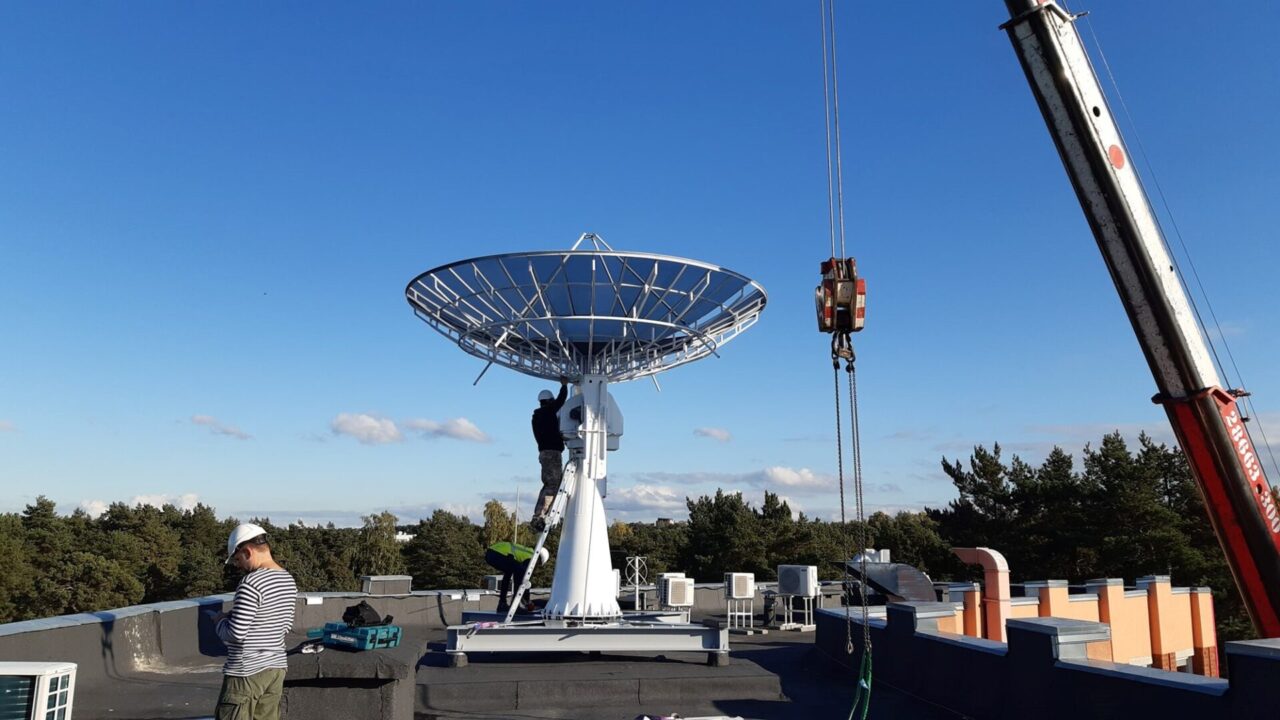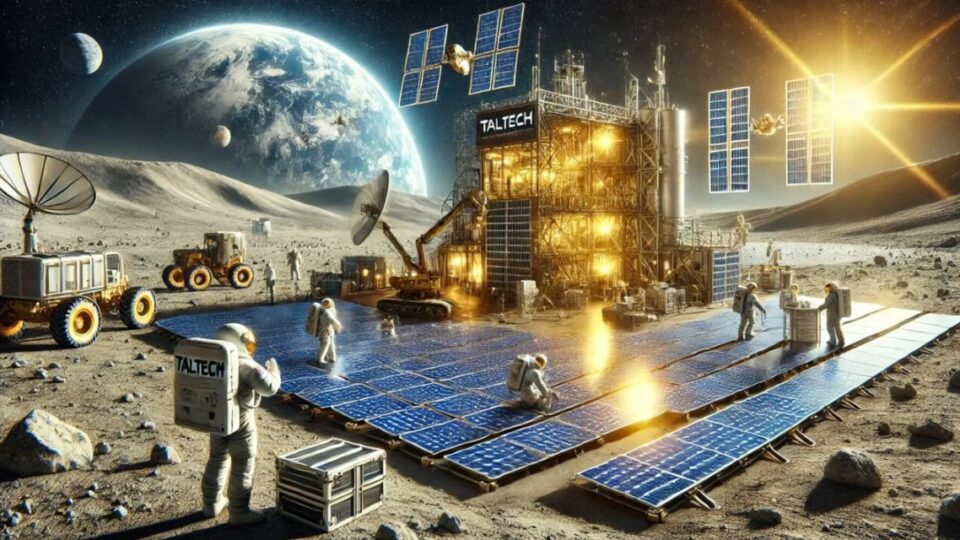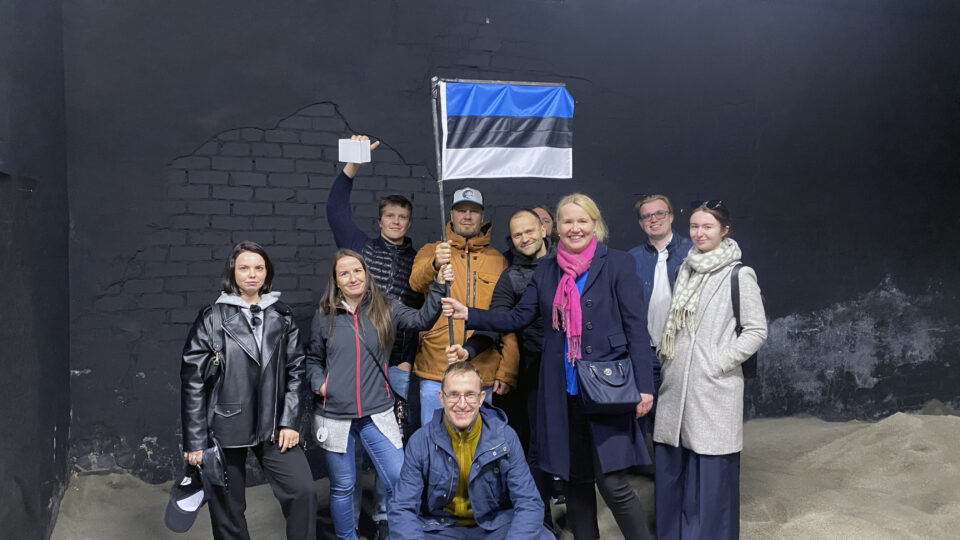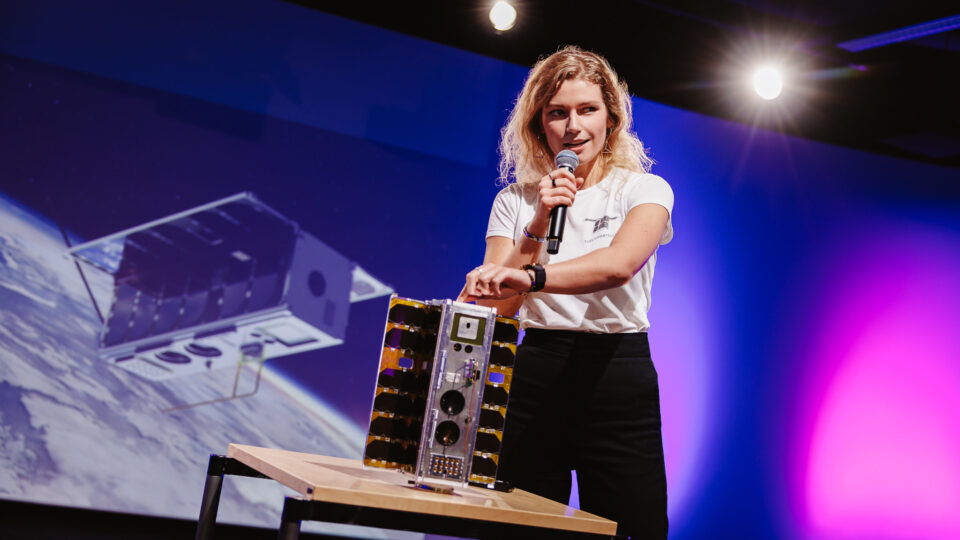TalTech researchers are working daily on various developments to contribute to the advancement of the space sector and put satellites to work for the benefit of society.
Student Satellite Builds SUTS
In Estonia, student satellites have been built for over 15 years, and during this time, the first TalTech satellites have also been launched. Koit and Hämarik were sent into orbit in 2019 and 2020. Today, both satellites have reached the end of their planned lifespan, and in 2024, they fell into the atmosphere, where they burned up due to friction and high speed, ensuring they didn’t remain as space debris.
The Estonian Student Satellite, which includes TalTech, is now building the second satellite, SUTS (Strategic Innovations Testing Satellite), for the second year. “The student satellite project brings together students from TalTech, the University of Tartu, and other schools and universities to jointly develop world-class space missions,” said Katriin Kristmann, a TalTech doctoral student leading the project.
The previous project of the Student Satellite was the ESTCube-2 satellite, which was mainly developed at the Tartu Observatory. “Many remember that ESTCube-2 was launched into space by the French rocket company Arianespace in the fall of 2023, but the satellite is not currently in orbit. Although ESTCube-2 was completed, it never made it to orbit. For those who want to know what happened to the satellite, a documentary titled ‘ESTCube-2: 10 Years to the Stars’ premiered in cinemas in February,” Kristmann said. The film tells the story of the satellite’s creation, long development, scientific mission, and what actually happened on launch day. Unfortunately, ESTCube-2 never reached orbit – the satellite likely failed to detach from the launch capsule due to a malfunction, which led to its destruction along with the rocket.
The SUTS project is developing a three-unit pico satellite in collaboration with private companies, which will test two new technologies in low Earth orbit. The project aims to foster inter-university cooperation that unites all Estonian students interested in space for a common goal. To join the SUTS project, keep an eye on the Student Satellite’s social media channels.
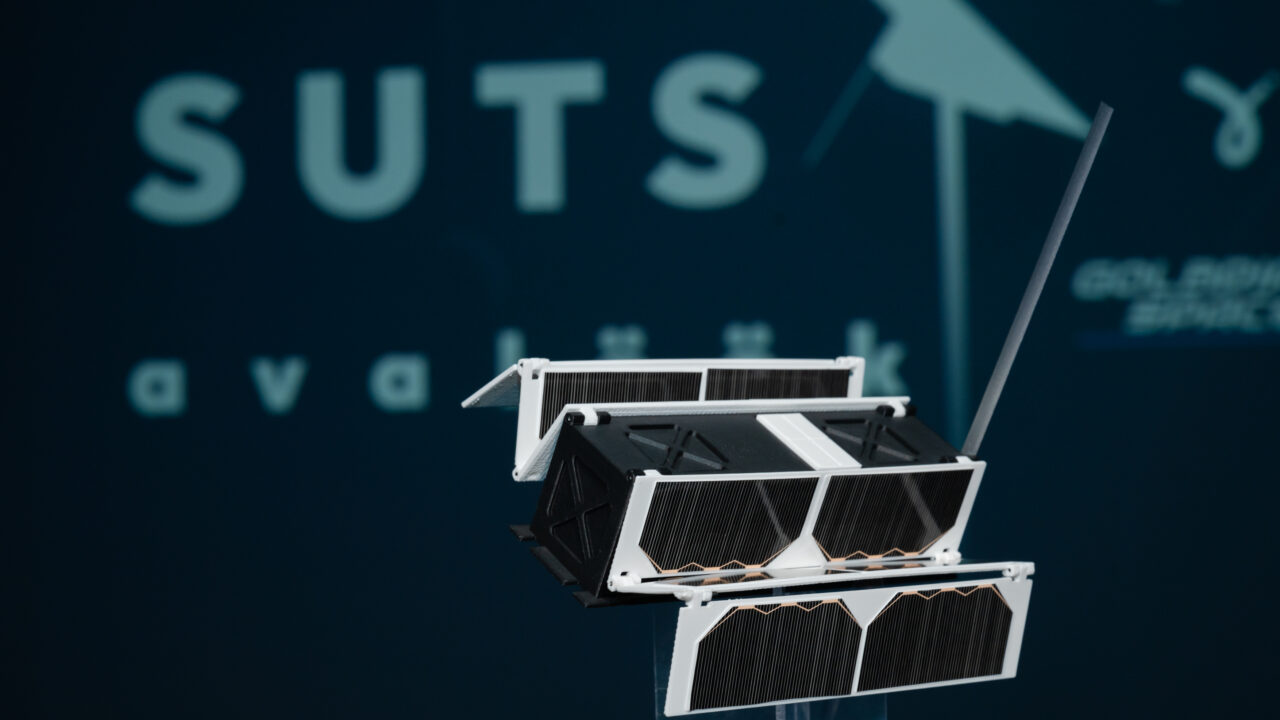
SUTS satellite. Photo: Evelin Palu
Possibilities of the ground station on Mektory’s roof
Those moving around Mustamäe have probably noticed the five-meter-diameter “satellite dish” on the roof of Mektory, specifically the parabolic antenna, which was set up to communicate with the Koit and Hämarik satellites. The more observant may have also noticed large Yagi-type antennas next to it. Madis Kaal, who participated as a software specialist in satellite construction, explained that the parabolic antenna receives signals sent by satellites, while the Yagi antennas are used to send commands from Earth to the satellites. Kaal described how the ground station software adjusts the antennas towards a specific satellite during passovers and regulates the receive and transmit frequencies, records data, and sends commands to the satellite. “Now that both TalTech satellites have completed their missions, the station has been awaiting new tasks for a while,” said the software specialist.
“Now that both TalTech satellites have completed their missions, the station has been awaiting new tasks for a while.”
With the ground station, other satellites, such as those belonging to the European Space Agency or other universities, can also be monitored. Madis Kaal pointed out that Estonia is also developing its first commercial satellites, being developed by companies Spaceit and KappaZeta. “TalTech’s ground station may offer the opportunity to communicate with these satellites as well.”
According to Madis Kaal, one of the upcoming tasks is to communicate with the student satellite SUTS, for which ground testing can already be carried out. He added that the ground station can also be used to teach students modern telecommunications and cybersecurity techniques, a field that TalTech’s lecturer in cybercriminalistics, Dr. Adrian Venables, has started working on. The software for the ground station has already been updated with small improvements for this new role.
As an interesting additional task, TalTech’s ground station can also be used as a radio telescope. Astronomy enthusiasts have already visited the ground station and are exploring how to apply the parabolic antenna as a telescope,” said Madis Kaal.
New course on space cybersecurity fundamentals
Starting from the fall of 2025, TalTech will be the only university in Estonia offering a master’s degree in cybersecurity. The previous joint program with the University of Tartu has been closed, and the updated specialized curriculum is now exclusive to TalTech. Compared to the previous program, several new courses have been added, including “Fundamentals of Space Cybersecurity.”
In this course, students will gain knowledge about the physical properties of the space environment, cybersecurity practices, and the orbital characteristics of different types of satellites. The course also introduces unique tools and addresses cybersecurity challenges related to space systems.
The knowledge acquired in this course will be valuable to companies and organizations involved in the space industry, as well as those working with satellite communications, satellite design, and other related fields. Upon completing the master’s degree, students can continue their studies at the doctoral level.
“Estonia has a highly developed cybersecurity sector, which gives us an excellent opportunity to offer a competitive curriculum,” explained program director Adrian Nicholas Venables. He hopes that the satellite antenna on the roof of Mektory will also be used in future cybersecurity education and research, provided that resources are found for its maintenance and upgrade. “This is a rare resource owned by only a few universities, and it gives us a unique advantage in both teaching and research,” he added.
“Estonia has a highly developed cybersecurity sector, which gives us an excellent opportunity to offer a competitive curriculum.”
According to Venables, cybersecurity education at TalTech is well-developed at both the undergraduate and master’s levels, and the new master’s program ensures that the curriculum and course content are up to date, enabling students to cope with current and future cyber threats. “Fundamentals of Space Cybersecurity is the first of its kind at Estonian universities, and it will become more detailed each semester. According to our vision, Estonia will become a leader in this field, and TalTech will be the first cybersecurity institution in the European Space Agency.
Innovative protective coating for solar panels and satellites
Solar panels are crucial in space – they provide the necessary energy for satellites and spacecraft. However, the space environment is extremely harsh: several factors, such as atomic oxygen and ultraviolet radiation, can damage solar panels. Conventional protective coatings, like glass-based materials, may not be light, durable, and flexible enough to provide optimal protection.
Sergei Bereznev, Associate Professor at the Laboratory of Photovoltaic Materials, explained that new materials composed of polysilazane and carbon nanotubes are being used for space applications. “Polysilazane is a pre-ceramic polymer that turns into a ceramic when heated or exposed to ultraviolet radiation. It forms a layer that protects solar panels from atomic oxygen and UV radiation. Additionally, it is very light and does not add significant weight to the spacecraft,” explained the associate professor. “When we combine the polysilazane layer with exceptionally strong carbon nanotubes, the protective layer’s resistance to micrometeoroids and temperature changes is further enhanced,” added Bereznev.
He noted that these transparent layers have shown promising results in protecting solar panels and satellites, as they help extend the lifespan of equipment in space.
Experts from the Laboratory of Photovoltaic Materials have also published several research articles on protective coatings based on polysilazane. Additionally, Bereznev supervises the doctoral research of Elizaveta Shmagina, a junior researcher, on this topic.
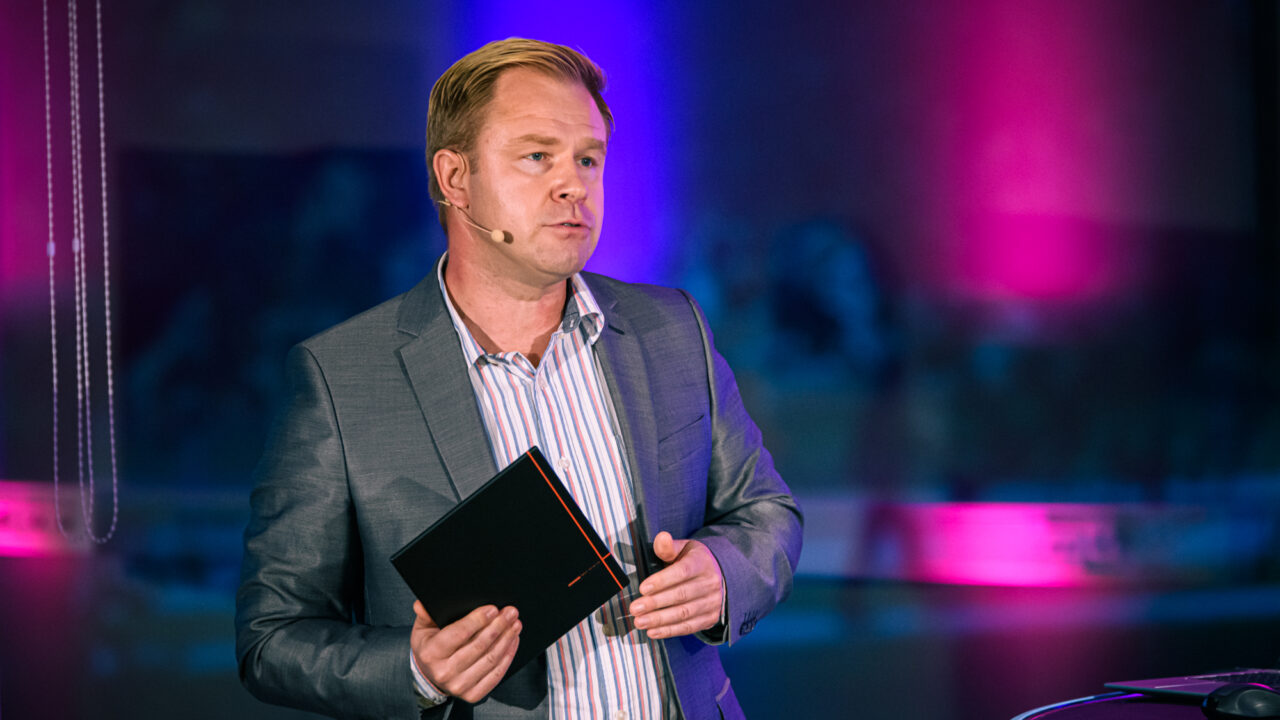
Maksim Jenihhin. Foto: TalTech
The development of crucial chips for space technology
Space solutions need to be resource- and cost-efficient for several reasons. Explains Professor Maksim Jenihhin, head of the reliable computing hardware center: “Space missions have limited energy and computational capacity. Additionally, every added reliability mechanism increases costs or even the system’s size and weight, which are critical constraints in space technology. Therefore, it is important to find a balance – to develop smart, efficient solutions that can prevent, detect, and correct faults without overburdening the system or making the mission too expensive. This is what we are working on in the TIRAMISU, TAICHIP, and CRASHLESS projects.”
“Space missions have limited energy and computational capacity. Additionally, every added reliability mechanism increases costs or even the system’s size and weight, which are critical constraints in space technology. Therefore, it is important to find a balance – to develop smart, efficient solutions that can prevent, detect, and correct faults without overburdening the system or making the mission too expensive.”
In today’s space missions, complex nanoelectronic chips, particularly edge-AI chips, play an increasingly important role. Jenihhin emphasized that if systems based on such chips are not reliable enough, the lack of reliability can lead to mission failures or even complete failure – when the system is already in orbit or beyond, there is no way to physically maintain and repair the equipment.
Edge-AI refers to the use of artificial intelligence models in devices: smartphones, Internet of Things (IoT) devices, drones, autonomous vehicles, and sensors that are located at the “edge” of the network. “Unlike traditional artificial intelligence, which processes data in central cloud servers, edge-AI performs computations within the device itself. This practice provides several advantages: faster processing, better privacy, lower internet usage, and the ability to operate without an internet connection,” explained Jenihhin.
He gave the example that an autonomous vehicle might use edge-AI to process immediate data from cameras and sensors and make driving decisions without needing a remote server. Jenihhin added that similarly, wearable medical devices could use edge-AI to monitor vital signs and detect anomalies quickly.
“For this, we need edge-AI chips that are specifically designed to efficiently perform artificial intelligence tasks in devices with limited power, energy, and memory. These chips are optimized to execute pre-trained models directly in the devices.”

